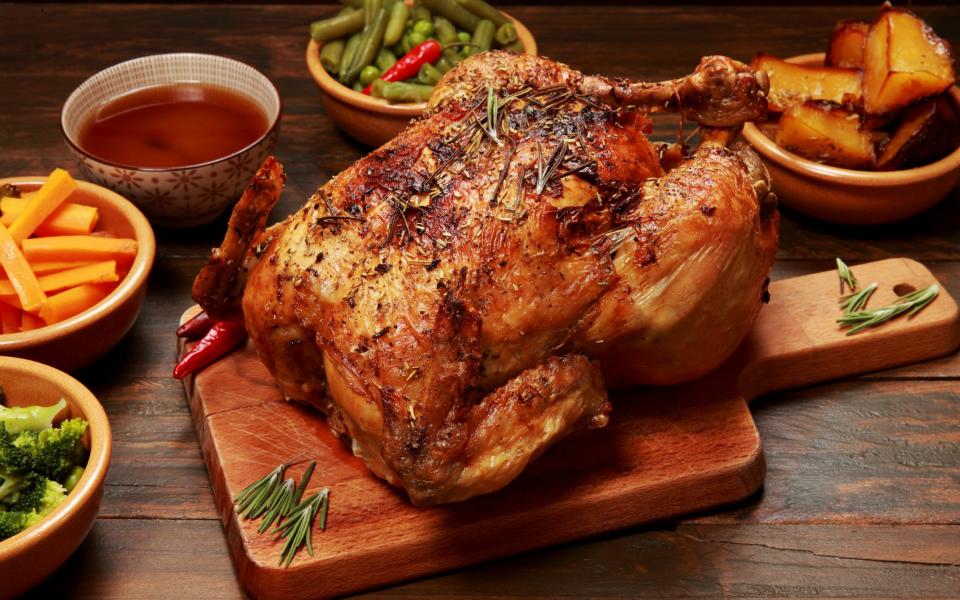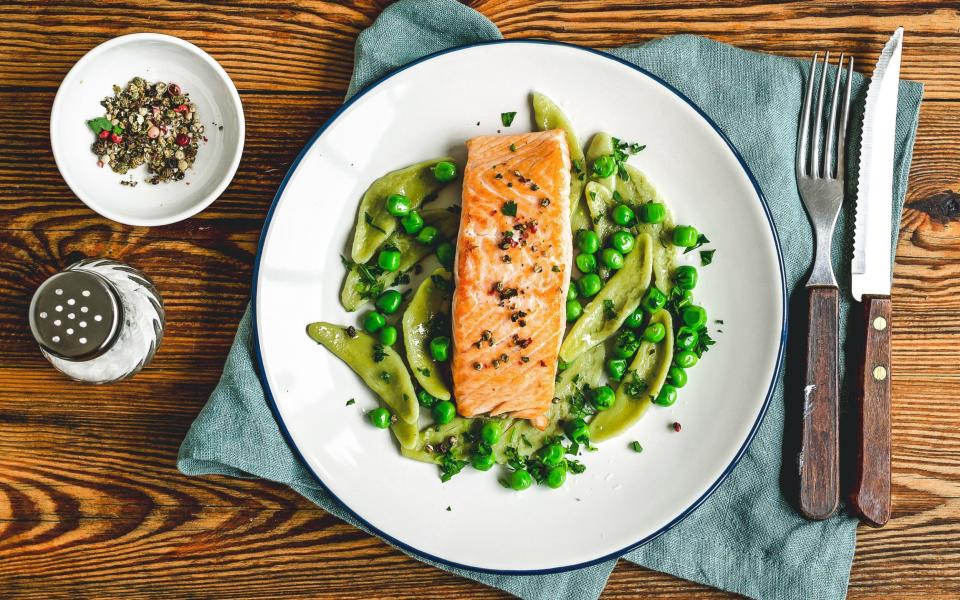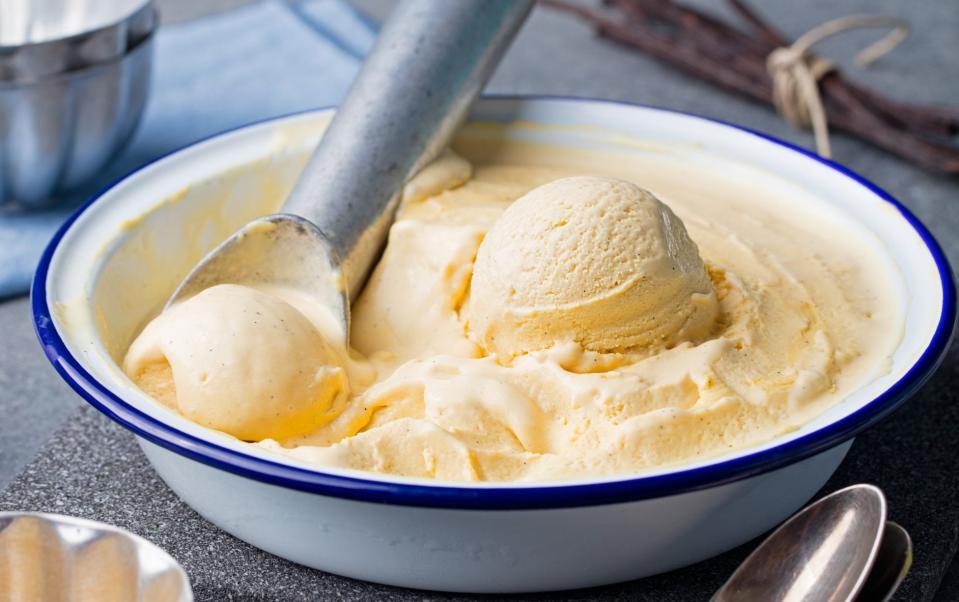The microwave’s moment has come – here's how to use it properly

Most of us own a microwave: anything between 80 and 95 per cent of UK households (estimates vary) have one. So why are we such terrible snobs about them? They are often hidden away, or dismissed as somewhere to heat ready meals. Gastronomes take pride in doing without one, like a quasi-intellectual gloating about not having a TV. It’s that vegan joke rebooted: how do you know that the cook doesn’t have a microwave? Because they’ll tell you.
Well, it’s time to wake up to the power of the microwave. Or rather, the lack of power that it uses, compared with conventional cooking methods. With energy costs spiralling to unthinkable levels, it seems that the microwave’s moment has come. Not before time, according to environmental campaigners, who have been pointing out for years that we need to think harder about how we use energy.
Recent research by energy supplier Utilita, as part of its “Cook Smart, Shop Savvy” campaign with Iceland supermarkets, showed the most energy-intensive cooking appliance in our kitchens is the electric cooker. This power guzzler typically costs 87p per day to run or £316 a year, based on it being used for an average of 43 mins per day, with dual-fuel cookers chalking up 72p a day. Meanwhile the least cool kid in the kitchen, the microwave oven, works out the cheapest of all the cooking appliances at 8p a day, assuming it’s used for 20 minutes.

It’s no surprise to Dr Christian Reynolds, of the Centre for Food Policy at London’s City University. “An oven is, in some ways, a hugely inefficient way of cooking, because you’re just heating a big box full of air.”
Real issues
So can we come round to the mike? There are irritations. We complain about the incessant pinging, the scalding steam when the cling film is pierced, and the glass door between us and the food making for a sort of gastronomic social distancing. I think we’ll get over these annoyances. Pingers can be turned off in newer microwaves and silicone food covers are easier to peel away in safety. As for that glass divide, we don’t get in a state about closing a (conventional) oven door on our dinner.
The real issue is the kind of heat, which in the case of microwave ovens is wet. While conventional ovens are big dry boxes of hot air, cooking from the outside and relying on conduction to transmit heat to the centre of the food, microwave ovens work by making the water – and to a lesser extent fat and sugar – molecules in food vibrate. This produces heat through friction and cooks the food. So they are essentially steamers: the surface of the food just doesn’t get hot enough to brown. The exception is food with a very low water content, such as bacon, which can be cooked to a perfect brown crispness in the microwave oven.
Yes, beautiful browning. We are in thrall to the Maillard reaction, a phenomena that occurs when heat makes amino acids, constituents of proteins, react with sugars, to create that colour and flavour we find irresistible. It’s what makes a roast dinner our favourite meal – the dark, Bovril-y outside of roast beef or crisp golden chicken skin, the crunchy roast potatoes, the gravy. But it’s also the delectable browned edges of a lasagne crust, or golden toasted cheese, or that flavour magic that happens when you fry courgette slices in butter until mahogany-edged.
Sadly, the cost of those oven dinners is high. Running an oven for an hour takes around 2.1kWh (more if you run it at a very high temperature), which from October will cost £1.09 (based on 51.89p per kWh]. But how do we match our Maillard aspirations with the steam-not-brown capabilities of the microwave?

The answer is, use your mike to do the donkey work, the cooking, then finish them under the grill or in a hot oven (no need to preheat) to brown them. With an 800W microwave using 0.18kwh for 10 minutes worth of cooking – enough to cook the veg in batches – that’ll cost 9p. Add in 20 minutes of oven time – 37p – and you’ve more than halved your costs. Same goes for a baked potato, points out Reynolds, especially for single people: “Whack it in the microwave, having pierced it, [give it] five or six minutes to precook it and then put it into the oven just to crisp enough at the end.” If your microwave has a combi-function, so much the better, as you’ll be heating a smaller space, which will be more fuel efficient.
There are countless other dishes that are done beautifully, and completely, in a microwave oven. Anything that is wrapped before going in the oven – like baked celeriac, say – will work just as well, more quickly and more thriftily, in the microwave oven. Vegetables cook perfectly, losing fewer nutrients than in a pan, ideal for soup bases and purées as well as eating as they are. Fish is arguably better done in the microwave than poached or steamed.
What’s missing, according to Reynolds, is better communication. “In the 1950s , 1960s and 1970s we had people knocking on doors saying, ‘This is how you cook with it.’” Now we are more sophisticated, but “the cooking community as a whole is quite snobby towards more convenient ways of cooking.”
So let’s have a new microwave maven, someone who can bring the genre up to date in the way that food writer Catherine Phipps has transformed attitudes towards the pressure cooker – another excellent power-saving device. We need a Diana Henry of digital cookery, a Tom Kerridge of the turntable, a Nigella to rule the wahvés – someone who can make us proud to show off our lean, green, thrifty microwave machine.
The Language of Microwaves
Timings in the microwave are based on the quantity of food, and its water content. So halving the quantities in a microwave recipe will mean reducing the time far more than you would for an oven or stove-top-based recipe. Start by cooking for the same proportion of time as ingredients, so half the time for half the amount of food. There will be an element of trial and error: stopping and starting to see if it’s done.
Then there is the power, or wattage, of the microwave, which is the equivalent of the oven temperature in a conventional cooker. Annoyingly, recipes don’t always give the power level: if they don’t it’s probably 650W or 700W, which used to be the standard for most microwaves. These days they can be 1100W or more, although some smaller, older ones run at as little as 400W.
If your microwave oven is a different wattage to the one in the recipe, you can adjust the cooking time, but there’s no precise formula for this: it’s a matter of trial and error. A better bet is to adjust the power level of your microwave to fit. However, manufacturers seem to be oblivious to the needs of the cook when it comes to power levels.

Most microwaves don’t state their wattage on the front, so if you’re in a holiday let, say, you may have to check the back of the oven for the details. Be aware that if it is a combination microwave oven (one with a built-in grill, say) the power level stated may be for the conventional heating element, and higher than the microwave power level. The only way to be sure may be to find an online manual.
But I have a bigger gripe with the manufacturers. There is no standard method on microwaves for controlling those power levels. You may be able to vary it by percentage, but trying to work out what percentage of 1100W is 650W feels like facing an exam maths problem when you’re hungry and tired. Alternatively, the microwave may simply have a dial reading “high”, “medium-high”, “medium” or “low”, which in the absence of an instruction manual or the energy to trawl through one, you can take as 100 per cent, 75 per cent, 50 per cent and 25 per cent. None seem to have controls which allow you to choose 1000W, 700W or 400W, in the way conventional ovens have standardised controls that can be set to 200C, 150C or 120C. I don’t think microwave designers cook much.
Standing time is key. Once the microwave oven has done its work, vibrating the molecules, they need time to settle and for the cooking to complete by more conventional conduction. If you tuck in straightaway, your food may not be done – and you may burn your tongue.
Micro Management: How to...

Cook crispy bacon
Lay four slices of bacon (not too lean) on a plate with two sheets of kitchen paper under, two on top. Heat for 3 mins (repeat if needed for 1-2 mins) until golden. It will crisp-up as it cools.
Toast nuts or seeds
Spread the nuts or seeds in a single layer on the turntable. Microwave for 20-second bursts, stirring well each time, until they smell roasted.
Caramelise sugar
Mix 200g sugar, 2tbsp liquid glucose or golden syrup, 2tbsp water and a couple of drops of vinegar or lemon juice in a 750ml heatproof glass bowl. Heat for 4 mins, then in 30 second bursts until turning a dark-honey colour. Stop when it’s a bit lighter than you want it: it’ll darken as it stands. Use straightaway, as it will solidify as it cools.
Roast root veg
Cook 400g well-seasoned carrots, covered in the microwave for three minutes or until barely done. Repeat with other root veg. Toss in olive oil, spread on a baking sheet and cook at 220C (no need to preheat the oven) for 20 mins or until touched with brown.
Reheat leftovers
Spread the food in as thin a layer as practicable, and cover with a damp paper towel (or damp muslin, if you sticking to reusables). Microwave in bursts of 20 seconds or so, shifting the dish a little each time, and stirring if practical. More dense foods will heat more slowly than those that are less dense.
Steam fish
Lay a fish fillet in a buttered microwave dish and add fronds of dill or other herbs. Season well and dot with butter, or spread with pesto. Nuke for 90 seconds per cm of thickness, checking every 90 seconds and shifting the position of the plate.
Heat soup
Reheat one portion at a time (annoying, I know, but it won’t take longer than doing two portions at once). Cover the bowl with a plate or microwave lid and heat in 60 second bursts, stirring each time, to redistribute hot spots. Lift the cover from the back so the steam rushes away from you, and use oven gloves to lift the bowl out of the microwave.
Cook chicken
You won’t get crisp skin, but poaching chicken works well in a microwave. Lay the pieces in a microwave-proof dish and add about 1.5cm chicken stock, plus a splash of vermouth or white wine if you like, and a couple of bay leaves. Cover and cook in bursts of 1-2 mins, until the chicken is almost cooked through. It’ll take around 3-4 minutes per portion. Rest for 3 minutes to allow the cooking to finish.
Reheat pizza or garlic bread
Put the pizza or bread on a plate lined with kitchen paper – this will absorb moisture and stop it getting soggy. Reheat in 30 second bursts, shifting the plate each time.
Soften ice cream
If it’s a whole pint tub, reduce the oven power to around 300W and microwave in 10-second bursts until it is soft but not melting – usually in about a minute.
Soften butter
Softening butter without melting is best done using the defrost setting in 10 second bursts. Make sure you remove the wrapper, especially foil ones.
Reheat rice or grains
Add about 2tbsp water to the rice or grains, to create steam. Cover and cook for 3-4 minutes per 250g, until piping hot (around 75C).
Boil water
Don’t: it can become “super heated” and boil over when you try to lift the container out, especially if it’s one with very smooth sides.
Microwave must-haves

Digital thermometer
A digital thermometer is useful in all sorts of ways in the kitchen, but for microwave cooking it allows you to check in several places – to avoid a hot spot situation. The chefs’ choice, and mine, is British brand Thermapen (£48) – look out for good discounts on end-of-line colours.
Joseph Joseph M-Cuisine microwave rice cooker
This gadget cooks rice in 10 minutes. Brown-rice lovers need to experiment a bit to get it right, but I’ve found that 200g of brown basmati, soaked in cold water for 30 mins then drained and cooked in 675ml of water for 20 minutes at full power. Get it at robertdyas.co.uk (£26.99).
Lékué microwave grill
Not being able to brown food in the microwave is a big issue, but this nifty gadget will give you appetising chargrill style stripes on your chicken, fish or even a melted cheese sandwich. It’s not cheap, but it could be a game changer when it comes to cooking in the mike. Get it at lakeland.co.uk (£36).
Lakeland round microwave plate with handles
Lifting hot food out of the microwave is a fiddly business, and this tray with its easy-grab handles is a real help. Get it at lakeland.co.uk (£6.99).
Silicon lids
These work in the fridge and the oven too but they really come into their own in the microwave, sealing in steam and protecting against spatter. Make sure you lift them from the back to avoid scalding yourself with a gush of steam Get them at ikea.com (£3 each).
Pyrex square glass food containers
Multipurpose wins in my kitchen. These glass dishes are heatproof to 300C, so you can start dishes in the microwave and finish them in the oven. The lids are vented for microwave use only but very useful there and for storage in the fridge. Get them at pyrex.co.uk (£36.49 for three 1.1l dishes).

 Yahoo News
Yahoo News 